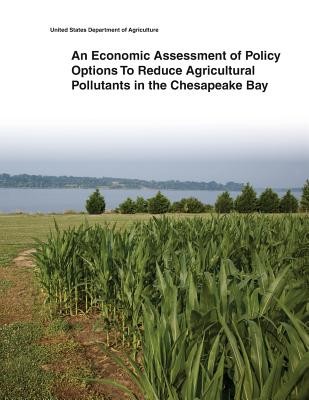
- We will send in 10–14 business days.
- Author: United States Department of Agriculture
- Publisher: CreateSpace Independent Publishing Platform
- Year: 2014
- Pages: 72
- ISBN-10: 1505433428
- ISBN-13: 9781505433425
- Format: 21.6 x 27.9 x 0.5 cm, softcover
- Language: English
- SAVE -10% with code: EXTRA
An Economic Assessment of Policy Options To Reduce Agricultural Pollutants in the Chesapeake Bay (e-book) (used book) | bookbook.eu
Reviews
Description
In 2010, a Total Maximum Daily Load (TMDL) was established for the Chesapeake Bay, defining the limits on emissions of nitrogen, phosphorus, and sediment necessary to reverse declines in the Bay's quality and associated biological resources. Agriculture is the largest single source of nutrients and sediment in the watershed. We use data on crop and animal agriculture in the watershed to assess the relative effectiveness of alternative policy approaches for achieving the nutrient and sediment reduction goals of the TMDL, ranging from voluntary financial incentives to regulations. The cost of achieving water quality goals depends heavily on which policy choices are selected and how they are implemented. We found that policies that provide incentives for water quality improvements are the most efficient, assuming necessary information on pollutant delivery is available for each field. Policies that directly encourage adoption of management systems that protect water quality (referred to as design-based) are the most practical, given the limited information that is generally available to farmers and resource agencies. Information on field characteristics can be used to target design-based policies to improve efficiency
EXTRA 10 % discount with code: EXTRA
The promotion ends in 18d.13:27:41
The discount code is valid when purchasing from 10 €. Discounts do not stack.
- Author: United States Department of Agriculture
- Publisher: CreateSpace Independent Publishing Platform
- Year: 2014
- Pages: 72
- ISBN-10: 1505433428
- ISBN-13: 9781505433425
- Format: 21.6 x 27.9 x 0.5 cm, softcover
- Language: English English
In 2010, a Total Maximum Daily Load (TMDL) was established for the Chesapeake Bay, defining the limits on emissions of nitrogen, phosphorus, and sediment necessary to reverse declines in the Bay's quality and associated biological resources. Agriculture is the largest single source of nutrients and sediment in the watershed. We use data on crop and animal agriculture in the watershed to assess the relative effectiveness of alternative policy approaches for achieving the nutrient and sediment reduction goals of the TMDL, ranging from voluntary financial incentives to regulations. The cost of achieving water quality goals depends heavily on which policy choices are selected and how they are implemented. We found that policies that provide incentives for water quality improvements are the most efficient, assuming necessary information on pollutant delivery is available for each field. Policies that directly encourage adoption of management systems that protect water quality (referred to as design-based) are the most practical, given the limited information that is generally available to farmers and resource agencies. Information on field characteristics can be used to target design-based policies to improve efficiency


Reviews